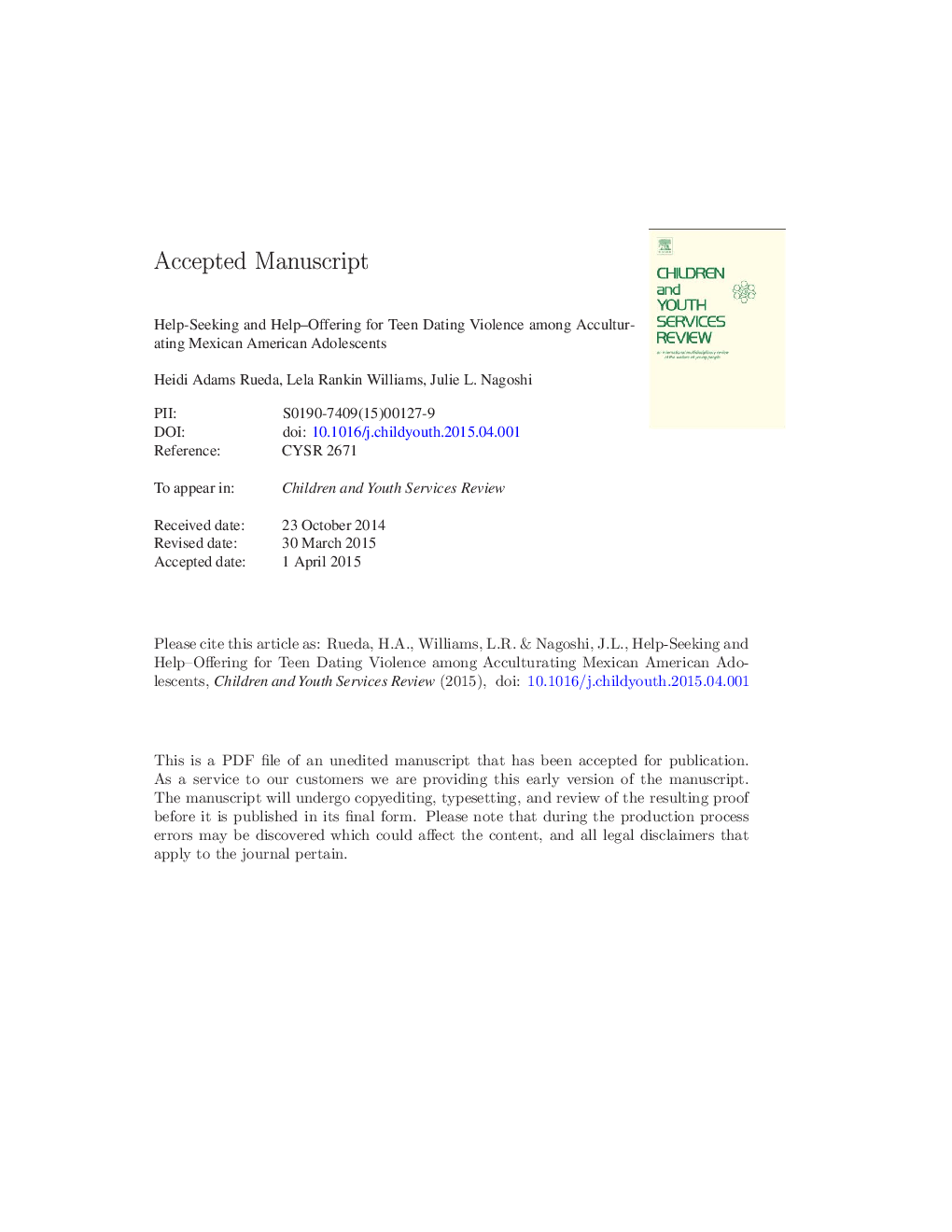| Article ID | Journal | Published Year | Pages | File Type |
|---|---|---|---|---|
| 6834062 | Children and Youth Services Review | 2015 | 32 Pages |
Abstract
Help-seeking sources, motivations, and barriers concerning teen dating violence are rarely co-examined alongside help-offering processes and messages, and both are understudied among minority youth populations. This study sought the perspectives of Mexican American adolescents (ages 15 to 17) concerning their preferences and experiences with both help-seeking and help-offering. Twenty focus groups (NÂ =Â 64 adolescents) were divided by gender and by acculturation level to allow for group comparisons. Friends and supportive family members were primary sources of help, although adolescents voiced a number of barriers to help-seeking. The most prominent barrier was fear they would be told to leave the relationship, an anticipated message that aligned with their tendency to tell others to do so. Help-seeking was viewed as a weakness, and help-offering was reserved for friends that asked for it. Recommendations for programs and practice with youth include promoting culturally and gender attuned teen dating violence services that emphasize confidentiality, and working at the family, peer, and school levels to foster healthy relationships.
Related Topics
Health Sciences
Medicine and Dentistry
Perinatology, Pediatrics and Child Health
Authors
Heidi Adams Rueda, Lela Rankin Williams, Julie L. Nagoshi,
